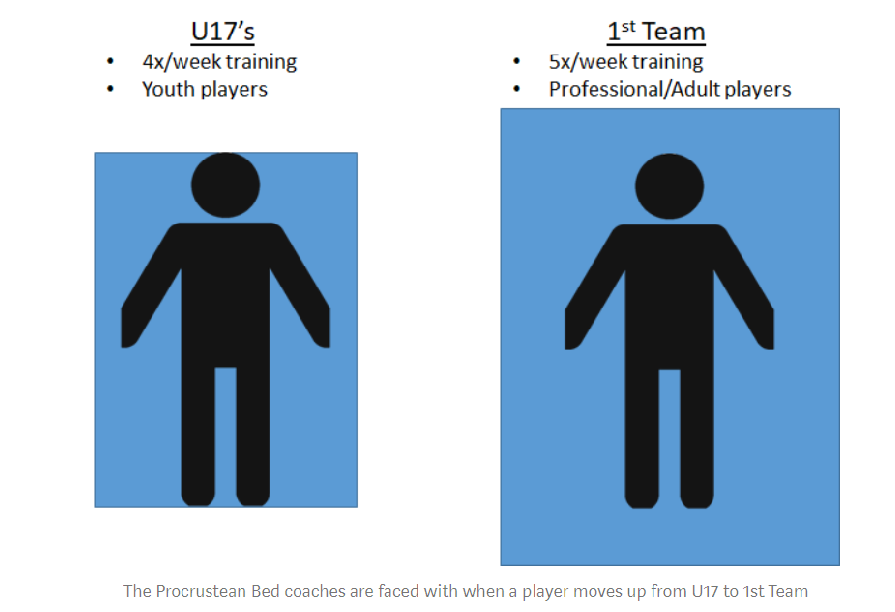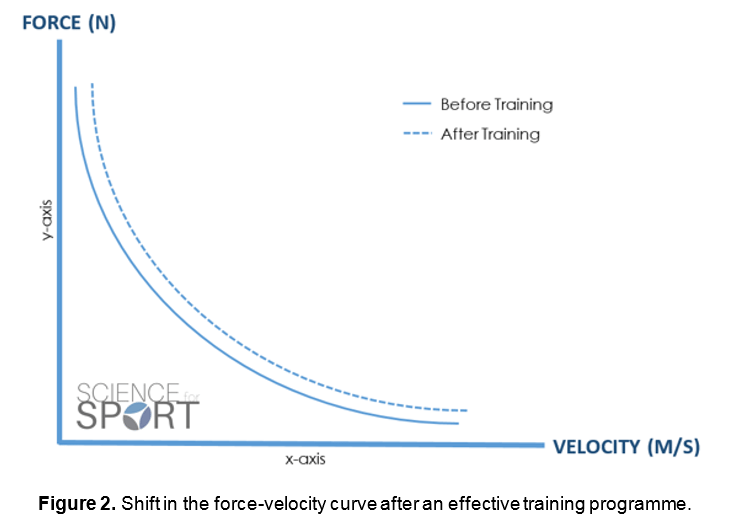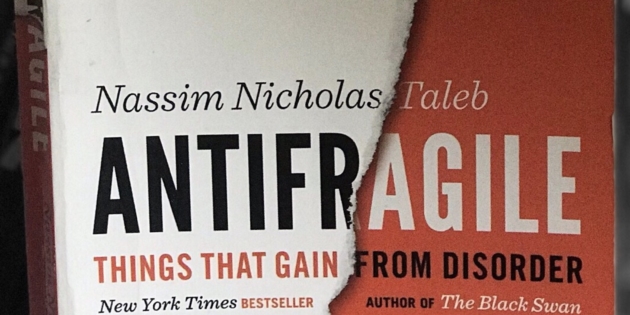From the book Antifragile: Things That Gain from Disorder by Nassim Nicholas Taleb:
1) The Procrustean Bed: “Procrustes got people to fit perfectly into his bed by cutting or stretching their limbs.”
- Strength coach has an ideal pattern for movement. Athlete needs to fit into this standard. Procrustean Bed.
- We all make Procrustean Beds if you appreciate the neurotyping work of Christian Thibaudeau and how different ‘brain types’ respond to different forms of training (5/3/1, Triphasic, etc.). Athlete hates 1×20 because they are a different neurotype, make them do it anyway because it’s part of “Block Zero”. Procrustean Bed.
Write up from Josh Faga: A Football Coach’s Procrustean Bed

2) The Fragilista: “Someone who causes fragility because he thinks he understand what’s going on.”
- Advising athletes that a ‘knees in’ position is bad and injurious. This is not true and could cause athletes to perform activities in an unnatural and fearful manner, maybe increasing the chances they actually do get hurt.
- The Fragilista thinks they have it figured out. They offer simple solutions (e.g. “just do this”) to complex problems.
- Post from Kyle Dobbs on this:
3) Iatrogenics: “Harm done by the healer, as when the doctor’s interventions do more harm than good.”

- (Replace doctor with strength coach) – running athletes through drills/movement corrections that physiologically provide benefit but psychologically are unengaging, pointless, and a waste of time to the athlete. You are focusing on the body but killing the brain. The brain and body are connected. More harm than good.
- Scenario: Athlete comes in with a 1-2-3 pattern (concept from Be Activated and Reflexive Performance Reset). All the physical therapists, strength coaches, athletic trainers, and movement specialists want to “get their hands on” said athlete to help them. They prescribe core bracing, heavy squatting, static stretching, etc (all the things we think are “good” for athletes). And the athlete leaves the intervention, no longer a 1-2-3 pattern, worse at their sport, and more prone for injury. This was a story told by Douglas Heel with a rugby athlete.
4) Skin in the Game: “Every captain goes down with every ship.”
- What do you have to lose by offering your criticism of athlete/coach/trainer? If nothing, don’t criticize. Have skin in the game then see if you still want to criticize. I bet you wouldn’t.
- Your criticism of LeBron James’s squat technique means absolutely nothing. You don’t work with him, you have no clue the context, and you have nothing to lose by saying his strength coach is incompetent.
5) “What Mother Nature does is rigorous until proven otherwise; what humans and science do is flawed until proven otherwise.”
- The athlete’s own self-organization for movement is right. If you think they are wrong, prove it.
- Inflammatory response from injury (Mother Nature). Put ice on it immediately (human intervention).
- Athlete has an asymmetrical arm flap during sprinting (Mother Nature). Strength coach prescribes seated 90-90 arm swing drills (human intervention). See Point #4 here.
6) “Explanations change all the time, and have changed all the time in history… experience remains constant.”

- When S&C coaches say we need to explain the “why” behind what we’re doing. I’ve never understood this.
- Example from the book: “Lifting weights increases your muscle mass. In the past they used to say that weight lifting caused the “micro-tearing of muscles,” with subsequent healing and increase in size. Today some people discuss hormonal signaling or genetic mechanisms, tomorrow they will discuss something else. But the effect has held forever and will continue to do so.”
- If it works, it works. Leave the “why” for those who actually care about it.
7) “people who on their own would not do something because they find it silly now engage in the same thing but in groups.”
- Snap Down Progressions/Regressions, that’s all.
8) Rationalizing and being rational are two opposites
- When we get in-depth into explaining why we do things the way we do… are we rationalizing our choices or are we actually being rational?
9) What proceeded what?
- Basketball came first. Then came the agility, footwork, plyometrics, etc. to enhance basketball.
- Basketball came first so basketball is the best way to train basketball.
- What has stood the test of time is probably right.
10) Fragile – Robust – Antifragile
- Fragile things get worse when they go through stress
- Robust things simply resist stress
- Antifragile things gain by going through stress
- Manage volume and intensity, consistently apply stress, and become more Antifragile with time.



